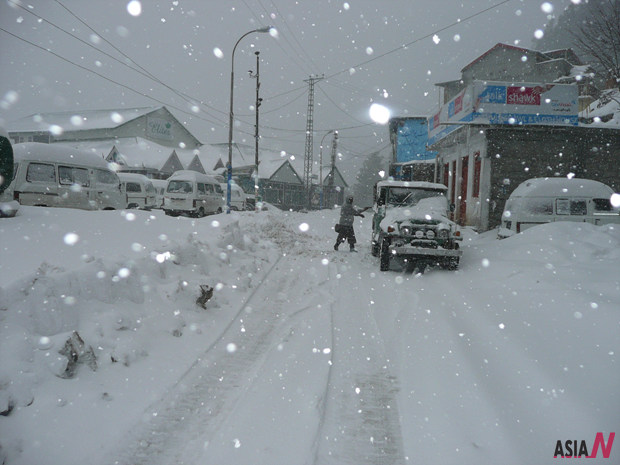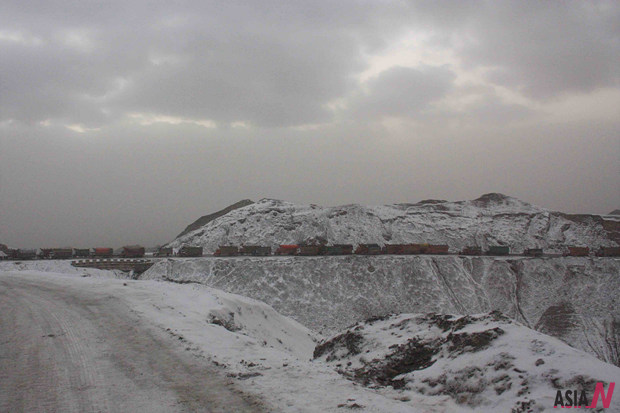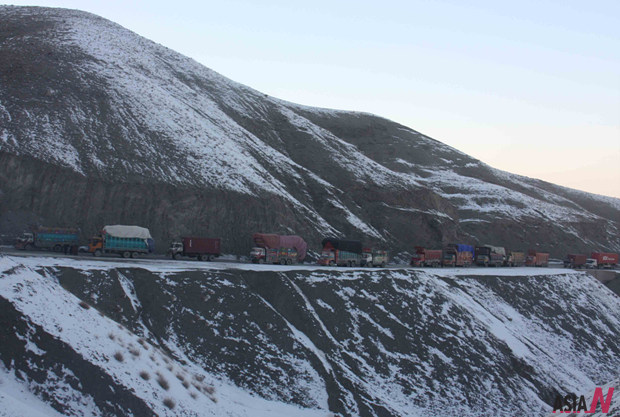Climate change: a reality for Pakistan
The climate change is no more a myth as scientific evidences as well as occurrence of frequent floods, cyclones and droughts around the world have proved beyond doubt that it is real. The fluctuations that occur from year to year, and the statistics of extreme conditions such as severe storms or unusually hot seasons, are part of the climatic variability.
Pakistan has been experiencing all such climate changes over the years. Country’s arid areas like Thar, one of the largest deserts of world bordering India, faced severe droughts for decades, as it received scanty rains annually causing mass migration of people along with livestock. The temperature in Sindh, the southern province and most parts of Punjab and Balochistan provinces of Pakistan often jumped over 50 degrees centigrade in summer that prolonged for eight months every year. Severe winter with snowfall is experienced only in northern mountain areas in Khyber Pakhtoonkhaw and Gilgit-Baltistan provinces besides Pakistan-administered Jammu & Kashmir State, most parts of which were flattened by high intensity earthquake in 2005. The cyclones had also been hitting Sindh province once a decade bring mass scale destruction in the coastal areas.
Country’s northern and central areas received considerable rains while there used to be normal or below normal rains in the southern and south-western parts. The normal or below normal rains and low melting of glaciers in Himalaya mountain range, caused a drastic decline in the rivers’ flows in Pakistan. The country experienced deterioration in water availability also because of diversion of river waters by India while Sindh province became the victim of shortage of water that generally prevailed in Pakistan and also by the diversion of water by its neighboring province Punjab through the number of barrages and link canals built upstream Indus River, the lone river of province.
However, the situation changed in 2010 when Pakistan experienced the deluge unprecedented in its history. Worst sufferers were the provinces of Khyber Pakhtoonkhaw and Sindh, and to some extent southern districts of Punjab province. Hundreds of people and thousands of houses were swept away by the gushing waters of rivers in Khyber Pakhtoonkhaw as its mountain areas received torrential rains. In Sindh, the Indus River over flowed or breached its banks and devastated half the province causing deaths of scores of people and displacing hundreds of thousands of others as major towns on the right bank of Indus River were inundated by the flood water that exceeded 1.1 million cusecs. Same situation was witnessed in affected districts of Punjab. According to official figures over 2000 people had died and 20 million displaced as one fifth area of country was under water.
Hundreds of school/college buildings and other government offices turned into camps and thousands of tent villages were setup to lodge the displaced families who had lost their all the belongings and homes. All this started in July and continued up to September 2010 and when the people were still in trauma, the monsoon started with torrential rains earlier than expected in April-May 2011 and continued up to August-September. This time the nature targeted 16 out of 23 districts of Sindh province devastating agricultural lands, standing crops and destroying thousands of houses, government buildings including schools. The Meteorological Department of country had forecast below normal monsoon rains for Sindh province but later they had to change the prediction as the rains started. The province received 1500mm rain during monsoon that started early and continued beyond usual period. Millions of people had again been lodged in schools/colleges and other government buildings besides thousands of tent villages. The heavy downpour caused death of over 350 people and killed thousands of livestock.
According to experts unprecedented torrential monsoon rains lashing Sindh and causing flash flooding in 16 districts of the province had a direct linkage with global climate change. Federal Advisor on Climate Affairs Dr.Qamar-uz-Zaman Chaudhry had at that time said in an interview that the volume of total water fallen over Sindh during four weeks alone was estimated to be over 37 million acres feet.
According to him the pattern of extreme weather events in Pakistan in the recent past has shown a clear indication of increased frequency and intensity of such events in Pakistan, in line with international climate change projections.
Before the start of these rains in 2011, Sindh was under severe drought conditions and did not receive any rainfall in the previous 12 months, he explained. A previous severe rainfall, which led to flooding in the province, had occurred in July 2003.
This pattern of extreme weather could be noticed in Thar Desert. The region is an arid zone where drought arrives after every three years, and may stay for 12 months or more. But there is a harsh twist in this pattern: the third drought in the cycle tends to be longer and more severe than the first two and parches the land for three years. This triggers the mass migration of locals to the other green areas.
The upper margin of the country is dotted with glaciers and mountains which serve as water towers for the country. Pakistan has already been observing snow liquefy floods – without any rain – and melting glaciers. Thus the threat of extreme monsoons could also occur in future, said another expert.
“Increase in extreme weather events, melting of glacier and rising temperature in arid places are the top three challenges. There are reported events of low yield in arid zones related to increase in temperature. Investigations of farmers and marine workers from 2006 confirmed that there is something wrong with Pakistan’s climate,” said Dr. Muhammad Mohsin Iqbal, Head, Agriculture and Coordination Section at the Global Change Impact Studies Centre (GCISC), Islamabad.
And now a prolonged winter
Pakistan is expected to experience a prolonged winter season this year as many parts of the country would face low temperature till mid-March due to La Nina effects that is a direct result of cooler than normal sea-surface temperatures.
Director General, Pakistan Meteorological Department, Mr. Arif Mehmood said the La Nina weather conditions result in continuous below zero temperature and if the data is analyzed it can be seen that many areas have been consistently facing ‘minus temperature’ for last many weeks.
“Even in Islamabad, capital of country, the temperature is below zero for last five weeks and same is the case in many other areas. The current weather statistics show that the winter season is likely to stretch till mid-March,” he said. Even in certain parts of Sindh province, where there used to be above 50 degrees centigrade temperature in summer, the temperature dipped to minus one that was unprecedented in history.
He said La Nina, Spanish for ‘Little girl’, is the ‘cool’ phase of the slighter better known El Nino or ‘The boy’ which represents the ‘Southern Oscillation’ in its ‘warm’ phase. “Sometimes both La Nina and El Nino produce combined effect generally called Enso that is a periodic climate pattern previously known to occur in the tropical eastern Pacific Ocean zone every five years or so with El Nino generally being of longer duration than his little sister,” he said.
He said the difference in pressure generates the trade winds, which blow east to west over the surface of the tropical Pacific, pushing the warm waters westward and the deeper, cooler waters then surface in the east, replacing the warm waters.
The available data showed that many parts of the country either received snowfall for the first time or after a long period, indicating changing weather patterns prevailing in the South Asian zone.
“The mountains that have relative height of at least 6,000 feet generally receive snowfall but this year even 4,000 feet high mountains also experienced continuous snowfall in Gilgit-Baltistan, Kashmir and Balochistan,” the data showed.
The La Nina event also means that surface air temperatures are liable to continue to be below normal for the next few months and this is liable to adversely impact agricultural production that also slumped last year as a direct result of massive flooding especially in Sindh.
Arif Mehmood said Pakistan experience bi-model rainfall behavior termed as Monsoon rains and winter rains. “Winter rains in Pakistan are mainly produced by western disturbances with polar maritime air mass properties whereas monsoon rains are caused by monsoon waves with tropical maritime air mass properties,” he said.
Dr. Qamar-uz-Zaman Chaudhry, a former Director General of Meteorological Department of Pakistan, said the climate change has become a reality for Pakistan.
After being devastated by the most severe flood in history, Pakistan has formally approved its first draft of the climate change policy. “In fact Pakistan is among the few developing countries which has prepared such a comprehensive national policy on a subject which is on top of the global priority agenda may be after war on terror,” said Dr. Qamaruzaman Chaudhary, leading author of the policy.




















































Mr. Obama asks the international conitmmuy to Give and they do, even those who earn a mere a3300- per week give on average a310- which is equal to 3% of their income pre tax!!I wonder just how much the following Pakistani plutocratic individuals will be contributing??!!What about China’s tragic woes Mr. Obama?? Or are the Chinese people not to be considered? They too have had massive losses thousands dead and tens of thousands homeless too.President Asif Ali Zardari is the second most richest person in Pakistan after Mian Muhammad Mansha Yaha with 40 Companies on Board.It has been disclose in a list released in the Internet, which has shorlisted Pakistan’s Most Influential Business Tycoons who have made their presence felt for a better part of country’s history.Mian Muhammad Mansha Yaha is ranked as No 1 with $2.5 billion thus one of the richest Pakistanis around with 40 Companies on Board. He owns Muslim Commercial Bank while setting up a $17m Paper Mill.President Asif Ali Zardari is Ranked 2 with total assets worth &1.8 billion. Zardari has huge stakes in Sugar Mills all over Pakistan while also has huge Business Ventures in the Middle East running into hundreds of Million if not Billion Mark.Anwar Pervaiz is ranked third with$ 1.5 billion and is the Chairman of Best Way Group that started in 1976 with its first Best way Cash and Carry warehouse opened in UK.It would be interesting to know just how much the Rich & Famous within the country have contributed.
Recent history of cry for life in Pakistan in 2010August 19th, 2010To fight for life is not fun,People are sglntgriug in Pakistan!They are miserable and helpless,No way out from such a mess!How strange, how rude,Pakistan’s President Zardari is not good!Why he is with the France CEO,In such an emergency what he should do!People are under water,They fight to breathe air!Relief here, relief there, very few,All nations should start a total rescue!Is it a regular natural event,Or, something is suspicious to experiment!Who cares if insignificant people die,Just give aid when miscellaneous folks cry!Unless someone masterminded such a fear,To get Pakistan’s button of Nuclear!Targeting civilians, for governmental causes,Definitely it is evil, satanic and heinous!Don’t think that it is funny,Such a painful misery and agony!Give up all hatred and cleanse your heart,Clean all discrimination and dirt!Origin of birth cannot be a cause to beat,Victims are innocents, please don’t hit!Dropping bombs is another way,For their death and hostility!To fight for life is not fun,People are sglntgriug in Pakistan!They are miserable and helpless,No way out from such a mess!